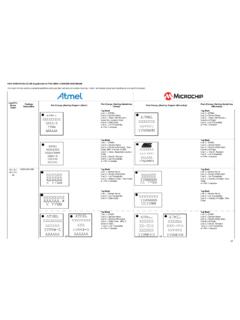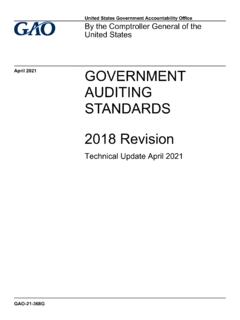Transcription of Guideline on clinical development of fixed combination …
1 30 Churchill Place Canary Wharf London E14 5EU United Kingdom An agency of the European Union Telephone +44 (0)20 36606000 Facsimile +44 (0)20 3660 5555 Send a question via our website European Medicines Agency, 2017. Reproduction is authorised provided the source is acknowledged. 23 March 2017 EMA/CHMP/158268/2017 Committee for Human Medicinal Products (CHMP) Guideline on clinical development of fixed combination medicinal products Draft agreed by SAWP 6 November 2014 Adopted by CHMP for release for consultation 23 April 2015 Start of public consultation 15 May 2015 End of consultation (deadline for comments) 15 November 2015 Adopted by CHMP 23 March 2017 Date of coming into effect 1 October 2017 This Guideline replaces ' Guideline on clinical development of fixed combination medicinal products' (CHMP/EWP/240/95 Rev.)
2 1). Keywords fixed combination medicinal products, guidance, clinical development Guideline on clinical development of fixed combination medicinal products EMA/CHMP/158268/2017 Page 2/12 Guideline on clinical development of fixed combination medicinal products Table of contents Executive summary .. 3 1. Introduction (background) .. 3 2. 3 3. Legal basis and relevant guidelines .. 4 4. clinical data requirements for a fixed combination medicinal product .. 4 Treatment of insufficiently responding patients ( add-on indication ) .. 6 Switch in patients adequately controlled with two or more active substances used in combination ( substitution ).
3 7 Initial combination treatment .. 8 Additional requirements for development of fixed combination medicinal products with new active substance(s) .. 10 Generic medicinal products .. 10 Bridging the evidence base to the fixed combination medicinal product .. 10 5. References .. 12 Definitions .. 12 Guideline on clinical development of fixed combination medicinal products EMA/CHMP/158268/2017 Page 3/12 Executive summary This is the 2nd revision of the Guideline on clinical development of fixed combination medicinal products containing two or more active substances within a single pharmaceutical form.
4 The active substances may be authorised substances or substances that have not yet been authorised in the EU. This Guideline addresses the clinical development requirements of fixed combination medicinal products, which shall reflect their intended therapeutic use and indication independent of the chosen legal basis for the submission of the marketing authorisation application. 1. Introduction (background) Combinations of medicinal products are administered in a number of scenarios to improve clinical outcomes for patients. Potential advantages for combinations of medicinal products compared to treatment with monotherapy could be that: The combination improves response in those with inadequate response to monotherapy, has a greater overall effect and/or is more rapidly effective; The combination improves safety due to one active substance counteracting the adverse drug reactions of another or by combining doses that are sub-therapeutic when used in monotherapy.
5 fixed combination medicinal products offer the possibility to simplify administration where a combination of active substances is already recognised with an existing therapeutic claim. Alternatively, a fixed combination medicinal product may be developed de novo to address a new therapeutic claim. clinical development should correspond to the intended claim (see sections to ). Particular attention should be given to the doses of each active substance in the fixed combination medicinal product, with each dose combination being scientifically justified and clinically relevant.
6 The proposed combination should always be based on valid therapeutic principles. Also, the combined safety (and efficacy) profile of all active substances in the fixed combination medicinal product should be considered. 2. Scope This document provides guidance on the clinical development strategy for a fixed combination medicinal product. The guidance applies primarily to small molecules irrespective of route of administration and dosage form (immediate versus modified release), but the general principles also apply to biological products. The scientific principles are also applicable to a substance designed to dissociate in vivo into two or more active substances that form its principal therapeutic moieties.
7 The Guideline does not apply to a single molecule active substance that affects multiple pharmacological targets ( has affinity to multiple receptors involved in the desired therapeutic outcome). The Guideline primarily discusses the development of fixed combination medicinal products with two active substances. However, it is expected that the same principles would generally apply to fixed combination medicinal products containing three or more active substances. The Guideline does not address the requirements for combination packs, where active substances are included in separate pharmaceutical forms marketed in the same package.
8 The clinical development of herbal fixed combinations as well as those composed of vitamins, oligo-elements and minerals are also outside of the scope of this Guideline . Guideline on clinical development of fixed combination medicinal products EMA/CHMP/158268/2017 Page 4/12 3. Legal basis and relevant guidelines The legal basis for applications concerning fixed combination medicinal products may vary depending on the particularities of the active substances in the combination and on the development undertaken. The choice of legal basis lies with the applicant.
9 In every case, the application must comply with the dossier requirements as set out in Directive 2001/83/EC and its Annex I (see also Notice to Applicants, Vol. 2A, Procedures for marketing authorisation, Chapter 1). This Guideline should be read in conjunction with the introduction and general principles (4), part I and II of the Annex I to Directive 2001/83/EC as amended and other pertinent elements outlined in the EU and the International Council for Harmonisation (ICH) guidelines , especially those on: Guideline on the investigation of bioequivalence - CPMP/EWP/QWP/1401/98 Rev.
10 1/ Corr. Guideline on Pharmacokinetic and clinical evaluation of modified-release dosage forms - EMA/CHMP/EWP/280/96. Note for guidance on the clinical requirements for locally applied, locally acting products containing known constituents - CHMP/EWP/239/95 final. Guideline on the Investigation of Drug Interactions- CPMP/EWP/560/95/Rev. 1 Corr. Dose Response Information to Support Drug Registration - CPMP/ICH/378/95 (ICH E4). This Guideline discusses overarching principles for the development of fixed combination medicinal products. The development programme for any product should be designed considering any specific therapy area guidance that is available on the EMA website.













